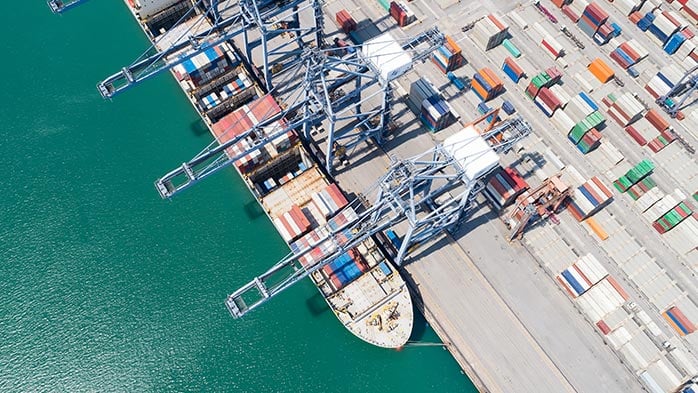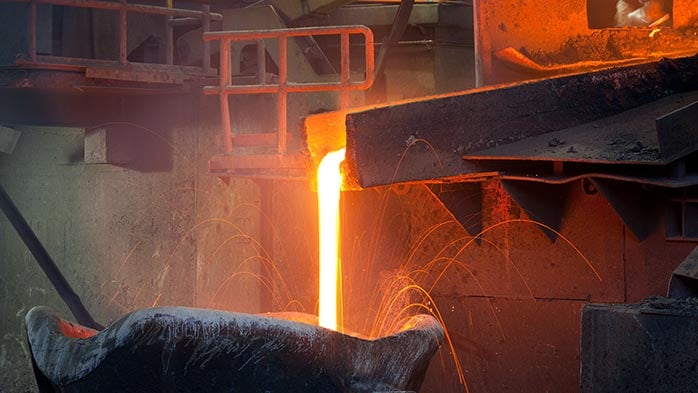Glencore’s rejected proposal to merge with Teck Resources and demerge the coal businesses of the two companies is characteristic of the wider trends currently defining the mining industry. Companies and countries are pivoting their strategic focus to future-facing metals and deleveraging exposure to sectors that, despite being profitable, run against the global decarbonisation agenda.
The announced deal between Glencore and Teck could signal a new wave of mega deals in the metals and mining industry, a concept which fell out of favour after many unsuccessful transactions during the last boom. The granting of more freedom for boardrooms to pursue acquisitive growth strategies could unlock synergies and expedite a transition to regionally centred supply chains, particularly for deals based on geographical proximity. And while a more competitive M&A landscape will drive asset metal prices up, it could also be the much-needed spur for the development of projects that are critical to the green energy transition.
Glencore’s hostile bid rejected by Teck
On 26 March, Glencore submitted an unsolicited, all-share proposal to merge with Teck Resources. The deal would see the creation of two new companies. MetalsCo would comprise their combined metals and minerals assets, Glencore’s metals and energy, recycling, marketing and distribution businesses and its investment in Viterra, a grain distributor. CoalCo would comprise their combined thermal and coking coal businesses, Glencore’s ferroalloys assets and Glencore’s coal and ferroalloys marketing businesses.
Glencore’s bid represented a 20% premium on Teck’s share price, valuing the deal at $23 bn, justified through a claimed unlocking of an estimated $4.25 to $5.25 bn in post-tax synergies, which include:
- $2.75 bn through Glencore marketing Teck’s output, including smelter optimisation,
- $1.5 bn in corporate synergies due to operating and overhead optimization,
- $1.0 bn through a joint approach to the operation of Collahuasi and QB2
Glencore’s hostile bid follows Teck’s own restructuring announcement on 21 February, involving the spin-off of its met coal assets into Elk Valley Resources (EVR). This would leave Teck Metals Corp focused on copper and zinc. Teck Metals would be a low-cost base metals producer with a strong growth story in its copper development portfolio, while EVR would be a high-margin steelmaking coal producer focused on cash generation. Teck Metals would continue to receive cash from EVR, providing continued funding for investment in its copper growth pipeline. Teck shareholders are due to vote on this proposal on April 26.
Glencore claims that its proposed merger would be a materially better transaction for shareholders than Teck’s proposed separation. However, Teck’s board disagreed and unanimously rejected Glencore’s proposal, claiming it:
- Was opportunistically timed. With its key QB2 project ramping up production, it would transfer value to Glencore’s shareholders by pre-empting Teck’s planned separation.
- Would have a high level of complexity and execution risk based on the number of jurisdictions, commodities and approvals required.
- Would create CoalCo as a predominantly thermal coal business, going against the global decarbonisation agenda and limiting the investor pool, causing Teck’s met coal business to trade at a discount.
- Would introduce oil exposure into the base metals business, which would reverse steps taken by Teck to exit oil.
Glencore is widely expected to come back with a higher offer. Hence, a merger between the two mining companies remains a possibility, despite Teck’s initial categorical rejection.
Miners shifting capital allocation strategies to focus on future-facing metals
Glencore’s proposal is part of a wide and well-established trend of mining companies restructuring their portfolios to focus on future-facing metals. This restructuring is in response both to pressure from investors looking for ‘greener’ portfolios, alongside the recognition of the significant growth potential of the key commodities necessary for the electrification of society through low/ zero-carbon power.
However, with producers pursuing the same goal, it is becoming harder to develop new capacity that also delivers sufficient value for shareholders. The development of new supply, especially of Tier 1 greenfield projects, is becoming more costly, riskier, and technically more complex. And so, inevitably, companies are looking for ways to expand and de-risk their growth options, with acquisition often being seen as offering the best ‘oven ready’ solution.
On the other hand, majors have been selling off their coal assets for a while. Rio Tinto started the movement in 2018 with the sale of its last coal mine; BHP announced its plans to move away from coal in 2020; Anglo American demerged its South African coal assets in 2021; and in the same year, Vale announced its objective to no longer own coal assets, focusing on becoming a leader in low-carbon mining. Teck’s recent plans to spin off its met coal assets was seemingly inevitable.
Glencore’s strategy has been different. The company expanded its presence in coal, acquiring more assets, and committed instead to the responsible depletion of its coal portfolio over time, pledging to reduce its coal business and to achieve net-zero emissions by 2050. It has clearly stated its belief that coal was required to meet global energy needs in the short-term. Some hold the view that while its coal business is enjoying peak-cycle earnings, this strategy may be weighing more broadly on Glencore’s market valuation. Glencore’s merger proposal is the first indication that the company might be changing its strategy and is now looking to exit its highly profitable thermal coal business as a fillip to its share price, which has traded well below competitor’s multiples.
Copper M&A activity escalates to highest level in a decade
Glencore’s merger proposal could be signalling the return of mega-deals in the mining and metals space, which fell out of favour after the numerous high-profile and value destructive transactions during the last commodity boom. Miners have been under pressure from shareholders to return capital in the form of dividends and share buy-backs and have been discouraged from pursuing an acquisitive growth strategy.
However, this could be changing. The total value of transactions concluded in 2022 reached the highest level since 2011, and the recently announced acquisition of Oz Minerals by BHP is one of the few copper deals over $5 bn conducted in recent years.
More freedom to pursue an acquisitive growth strategy could unlock value in the base metals sector, as exemplified by several recent transactions, such as the Capstone Mining and Mantos Copper merger, or the acquisition of a share in Caserones by Lundin Mining. Both sought to take advantage of synergies created by geographical proximity. A significant part of the value in Glencore’s proposal comes from the proximity between Collahuasi and Quebrada Blanca.
In recent years, M&A activity in the mining and metals industry has been dominated by the gold and copper sectors. However, while gold sector activity has been driven by industry consolidation, as miners compete to increase their market share and replenish depleting gold reserves; copper sector activity has been driven by the energy transition and companies looking to secure their role in supplying the growing demand base.
During 2022, 45 copper-sector deals were completed for an aggregate consideration of $16.3 bn. A further $7.5 bn of transactions were announced last year and are expected to be completed this year. This year has already seen another $2 bn of announced deals across nine transactions, increasing to ten transactions totalling just under $10 bn if we include the copper-attributable share of Teck Resources (estimated 35% of revenues once QB2 reaches capacity) following Glencore’s rejected offer.
Of importance in this deal universe is the increasing participation from non-traditional bidders, with automaker Stellantis recently acquiring a 14.2% equity stake in McEwen Copper, owner of the Los Azules project in Argentina. Argentina’s top power generator, Central Puerto, has also recently expressed an interest in taking equity stakes in local copper projects. This is further increasing the competition for projects, which will put upward pressure on asset prices, but could also support project development.
What would MetalsCo look like?
MetalsCo would be a large player in base metals mining, and position it as one of the significant producers supplying the metals critical to the green energy transition. It would have a globally diversified footprint, as well as multiple growth options, particularly in copper.
MetalsCo would compete for the top spot among copper producers and has the potential to reach around 3.0 Mt/y of copper production in the long-term, according to Glencore’s calculations, thanks to the large number of copper projects in the pipeline of both companies.
MetalsCo to be the largest refined and mined zinc producer?
CRU expects Glencore to account for 1.26 Mt/y of refined zinc capacity in 2023, including the recent takeover of Valleyfield from Noranda Income Fund. This makes the company the second-largest zinc producer globally. When combined with Teck’s 310,000 t/y Trail operation, MetalsCo would account for around 18% and 10% of ex. China and global capacity, respectively, overtaking Korea Zinc Group, making the company the largest refined producer in 2023 globally.
Meanwhile, we forecast Glencore to produce around 934,000 t of mined zinc in 2023, already making the company the largest mined zinc producer globally. Meanwhile, Teck is expected to be the third largest mined zinc producer, behind Vedanta, with an anticipated output of 652,000 t. Combined, MetalsCo would account for around 19% and 13% of ex. China and global production, respectively.
What about nickel?
Of the two companies, only Glencore owns nickel producing assets. Glencore produced 148 kt (including third-party feed) in 2022 across its three operations. Glencore’s share of 2022 global nickel production was under 5%. Both Murrin and Nikkelverk produce class 1 material thus the company does have a greater exposure to this part of the nickel market. This is important given the strong demand growth expected from the EV sector. We do not see a substantial change in Glencore’s class 1 output over the next few years at least.

















